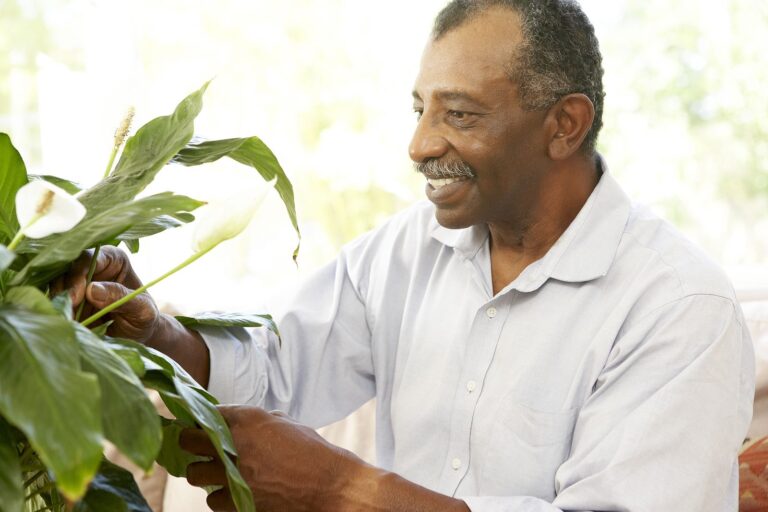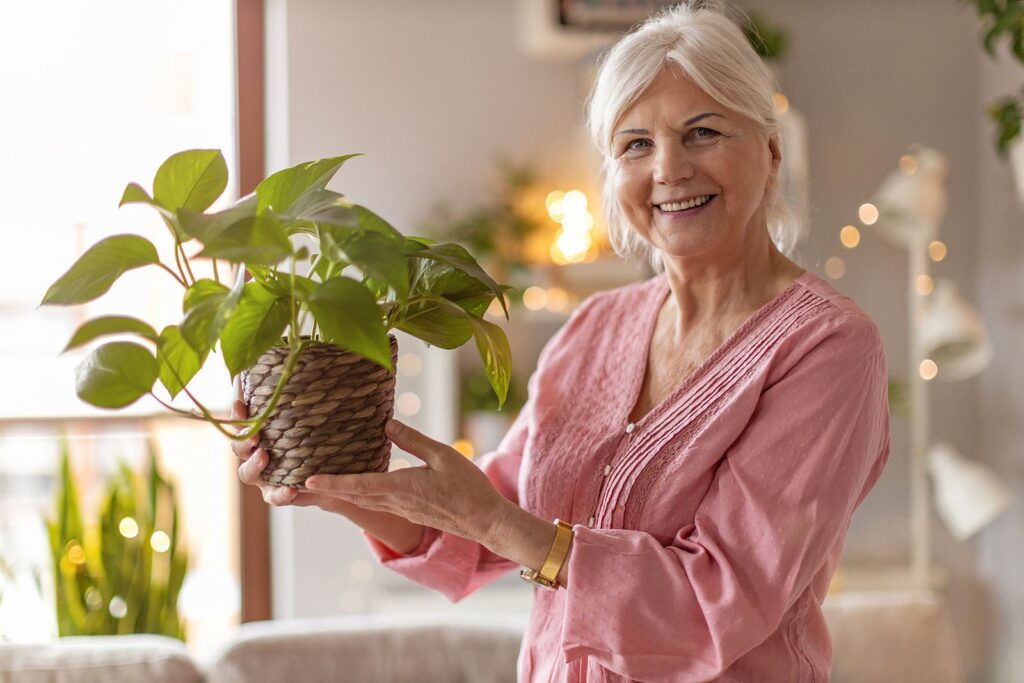
No Green Thumb Required…
Caring for Houseplants
Plenty of people seem to have been born with “green thumbs.” They create and tend bountiful gardens, and their homes are filled with healthy, robust houseplants. They make it all look so easy. But there are also lots of folks with thumbs that are not quite so green. For these individuals, the ability to keep a plant alive… let alone thriving… can be a real challenge.
But, the truth is… Green thumbs don’t really exist. They’re mythical, just like unicorns. In reality, almost anyone can enjoy a home filled with houseplants and keep every one of them alive. A “green thumb” is really much more about having knowledge and experience than it is about being born with natural talent.
If you have a “not so great” record for caring for plant life, don’t give up hope. It just takes a little time and effort to improve your abilities. If you are not doing as well as you’d like with your houseplants, the following tips may be enough to help you up your game. If you need a bit more instruction, you may find attending a class or workshop at your local garden center extremely helpful and eye-opening.
Don’t give up, stay at it, and soon you’ll be able to keep your houseplants healthy, vibrant, and around for a long, long time.
Some helpful tips…
Watering Tips
How often a plant needs to be watered depends upon the type of plant it is and the conditions within the home environment where it lives. Here are a few general tips to think about when watering houseplants.
- Plants usually do best when they’re watered with water that’s lukewarm or room temperature. It’s best not to use water that’s too cold or too hot.
- The vast majority of houseplants should be watered when their soil is still slightly moist from the previous watering. In most cases, soil should not be allowed to dry out completely. However, for plants like cacti that require little water, the opposite is true and soil should be absolutely dry before watering. Some plants require only a misting of water every now and then while other plants do best with soil that is always kept moist. It’s best to do some research about the watering tips of specific plants.
- Too much water is not a good thing for plants. Do not over water your plants. Over watering is very common. The desire to keep watering a plant can be very similar to the desire to keep offering food to a guest in your home, even when the guest has already eaten his or her fill.
- Plants should be in pots that allow for proper drainage. Usually, that means having drainage holes in the pot itself. When water can’t drain and becomes trapped in a pot, it can cause plant roots to rot. To avoid water damage to furniture or windowsills, keep plant pots in shallow waterproof trays. Some trays come with pebbles that allow any water that accumulates to evaporate.
Lighting Tips
All plants require some amount of light to survive. They need light to manufacture food. It can be difficult to know exactly how much light a plant really needs. Most plants come with some information indicating the amount of light they require. Staff at your local garden center should be able to provide the information as well. Here are a few tips about plants and lighting.
- The majority of typical houseplants do well in indirect light that’s moderate to bright in intensity. Usually a plant with flowers or colored leafs needs more light than a typical green plant.
- Once you find a spot with the ideal amount of light for a plant, it’s important to rotate the side of the plant facing the sun every week or so. In addition, the amount of light coming through a particular window changes as seasons change, which means you may have to find a new spot for your plants each season.
- Don’t let plants get sunburned. Direct sunlight through a window can be very strong. Too much sunlight that’s too strong can quickly damage plants.
Humidity Tips
The amount of humidity in the air matters to your houseplants. They need some moisture in the air. If the air in a plant’s environment is too dry, the plant may not thrive. In fact, it may not survive. Here are a couple tips about humidity and houseplants.
- If the air in a room tends to be dry, using a standard humidifier will increase the moisture in the air and help keep plants healthy and happy.
- Air is usually much more humid in some areas of a home, like the kitchen and bathroom. Bathrooms actually provide an optimal environment for some plants because of all the humidity created by hot water routinely running in the shower and sink. You might want to consider moving some plants to the bathroom for a visit now and then.
Temperature Tips
When it comes to hot and cold temperatures, houseplants are a lot like us. To be healthy, happy, and content, we both need about the same conditions temperature-wise. Here are a few tips about temperature and houseplants.
- Keep plants away from the cold. In wintry weather, keep plants away from drafty windows that let in cold air. It’s also possible for a plant to freeze if too close to a very cold window. During warm summer months, make sure plants are away from cold air blowing out of an air-conditioner.
- Direct heat can hurt your plants. Plants do not do well if they are too close to a heating duct. Hot air blowing over a plant is not well tolerated and can cause significant damage.
- Although displaying plants near an external door may add a nice touch as a greeting to guests, the location is not ideal for plants. Your plants may get a blast of cold or hot air each time the door is opened and closed.


Age Adds Flavor
We are not old, we are seasoned!
Don’t forget to visit us on FACEBOOK!
